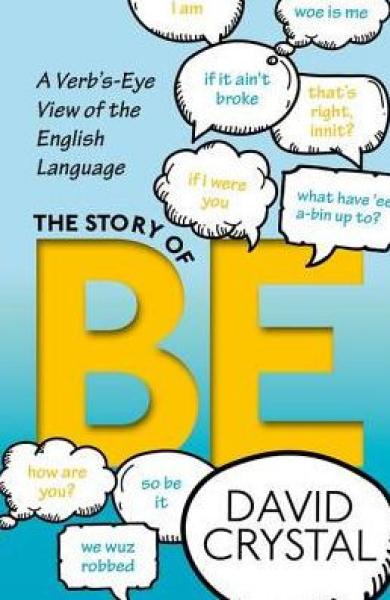Description
It's the most simple, unassuming, innocent-looking verb: to be. Yet it is jam-packed with more different meanings, forms, and uses than any other English word. As he reveals be's multiple incarnations, David Crystal takes us to the heart of our flexible and changing language. He tells the intriguing story in 26 chapters, each linked to a particular usage. We meet circumstantial be (how are you?), numerical be (two and two is four), quotative be (so I was like, 'wow'), and ludic be (oh no he isn't!), and a whole swarm of other meanings. Bringing the ideas to life are a host of examples from sources as varied as Beowulf, Jane Austen, pantomime, Hamlet (of course), and Star Wars, with cartoons from Ed McLachlan and Punch peppered throughout. Full of fascinating nuggets of information, it is a book to delight any lover of words and language.
It's the most simple, unassuming, innocent-looking verb: 'to be'. Yet it is jam-packed with more different meanings, forms, and uses than any other English word. As he reveals be's multiple incarnations, David Crystal takes us to the heart of our flexible and changing language. He tells the intriguing story in 26 chapters, each linked to a particular usage. We meet circumstantial 'be' ('how are you?'), numerical 'be' ('two and two is four'), quotative 'be' ('so I was like, "wow"'), and ludic 'be' ('oh no he isn't!'), and a whole swarm of other meanings. Bringing the ideas to life are a host of examples from sources as varied as 'Beowulf', Jane Austen, pantomime, 'Hamlet' (of course), and 'Star Wars', with cartoons from Ed McLachlan and Punch peppered throughout. Full of fascinating nuggets of information, it is a book to delight any lover of words and language.
A brief, illuminating disquisition on the history and varied tasks of the verb 'to be'... Language lessons from a master delivered masterfully.--Kirkus
Crystal is the rock star of English linguistics studies, a writer and editor of more than 100 books targeted to both academics and civilians... Lucky for us, he writes with wit and charm, and is at home contextualizing language in the time of the Greeks as well as in the era of texting.--Journal of Magazine Media
It's the most simple, unassuming, innocent-looking verb: 'to be'. Yet it is jam-packed with more different meanings, forms, and uses than any other English word. As he reveals be's multiple incarnations, David Crystal takes us to the heart of our flexible and changing language. He tells the intriguing story in 26 chapters, each linked to a particular usage. We meet circumstantial 'be' ('how are you?'), numerical 'be' ('two and two is four'), quotative 'be' ('so I was like, "wow"'), and ludic 'be' ('oh no he isn't!'), and a whole swarm of other meanings. Bringing the ideas to life are a host of examples from sources as varied as 'Beowulf', Jane Austen, pantomime, 'Hamlet' (of course), and 'Star Wars', with cartoons from Ed McLachlan and Punch peppered throughout. Full of fascinating nuggets of information, it is a book to delight any lover of words and language.
A brief, illuminating disquisition on the history and varied tasks of the verb 'to be'... Language lessons from a master delivered masterfully.--Kirkus
Crystal is the rock star of English linguistics studies, a writer and editor of more than 100 books targeted to both academics and civilians... Lucky for us, he writes with wit and charm, and is at home contextualizing language in the time of the Greeks as well as in the era of texting.--Journal of Magazine Media
Last updated on
Product Details
- Oxford University Press, Brand
- Jun 1, 2017 Pub Date:
- 0198791097 ISBN-10:
- 9780198791096 ISBN-13:
- 208 Pages
- 7.8 in * 5.3 in * 0.8 in Dimensions:
- 1 lb Weight:




